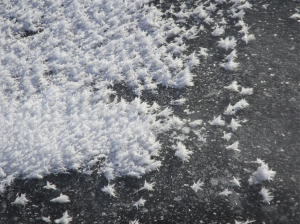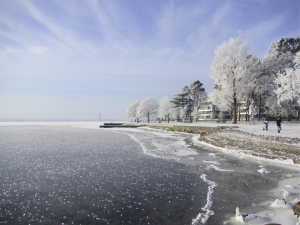
Frost flowers on ice cream: When you start thinking about phenomena and something really annoying, all of a sudden, becomes really cool.
Frost flowers on ice cream. You must have seen them before: They sometimes occur when you’ve had some ice cream, put the left-overs back in the freezer, and take them out…

